At SaaStr AI Day, Siqi Chen, founder, and CEO of Runway, discussed his belief of why every role will become a prompt engineering role, along with some no-code AI tips showing how to build products without knowing how to code.
Why Is Every Role a Prompt Engineering Role
Runway is a next-generation finance platform. They’ve built four AI tools, three without writing code, and have developed an AI-first culture at Runway where everyone can develop and utilize these AI tools without a formal engineering background.
AI is a force multiplier for human capital. “I consider AI the greatest invention since fire,” Siqi shares. It allows you to turn one person’s ability to get output into 2, 3, 10, or 100 people’s abilities without actually needing that many people.
3 Ways Runway Uses AI Prompts
1. Sales Qualification
You’re entered into a flow when you sign up and enter an email on Runway’s website to join their waiting list. The chart below shows what happens.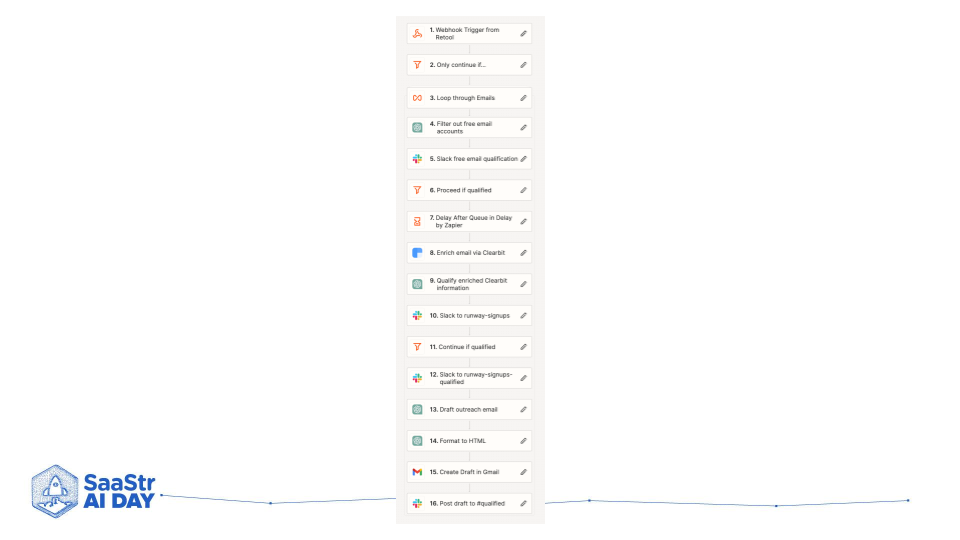
Automatically a new sales lead will go through the following steps before ever reaching a human person: it goes to Runway’s database and then through Zapier automation, then a ChatGPT prompt then filters out all free email accounts. Then, it enriches the email with Clearbit information so they know where the person works, how big the company is, and their role to see if they’re a qualified lead.
Then, they draft a customized email for that person and put the draft inside the draft folder of a sales rep. When they come into work in the morning, all they have to do is go to the draft folder, check the email copy, tweak it if needed and press send.
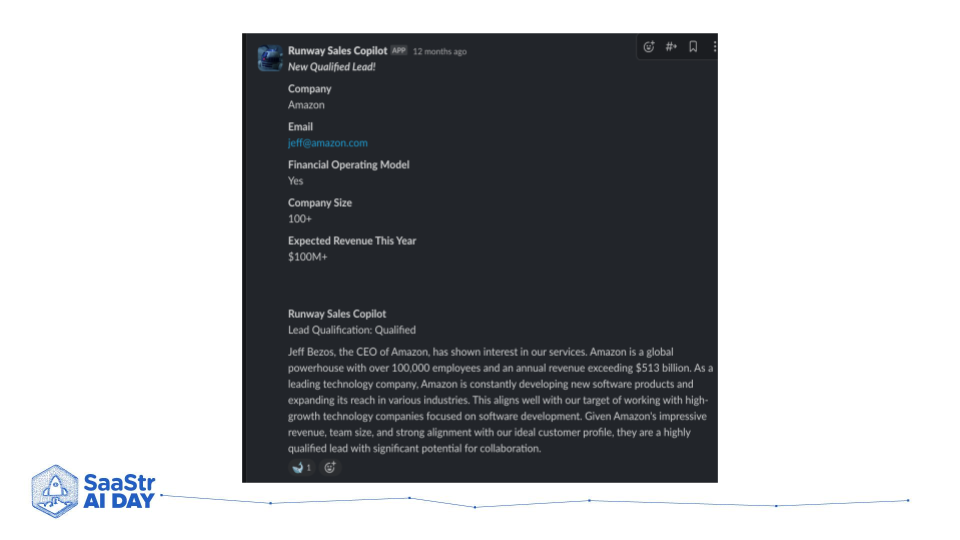
Here are sample outputs. Everything below “Runway Sales Copilot” is written by AI. The next step is drafting an email. This next sample is a real lead in a drafts folder. Runway always tries to have some clever connection to what the person does and what Runway does.
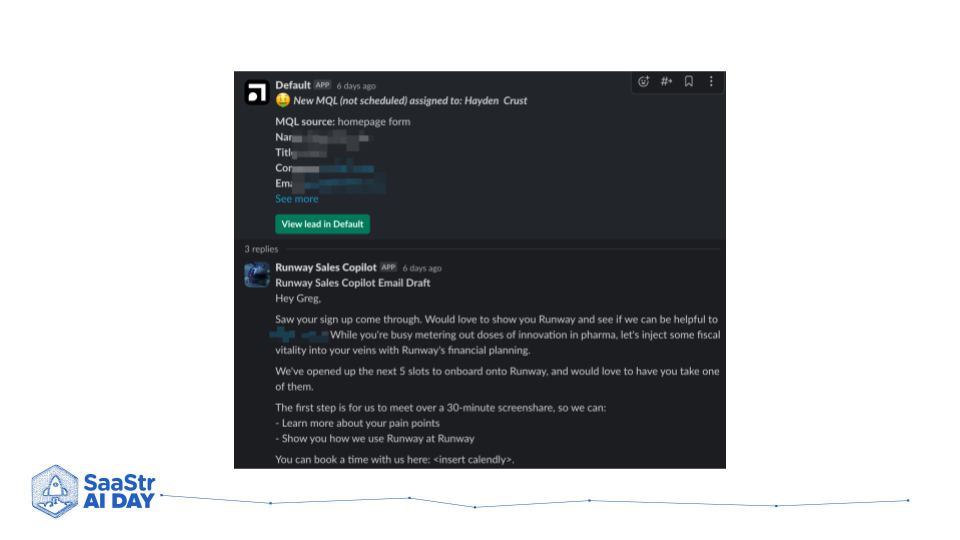
How does that work?
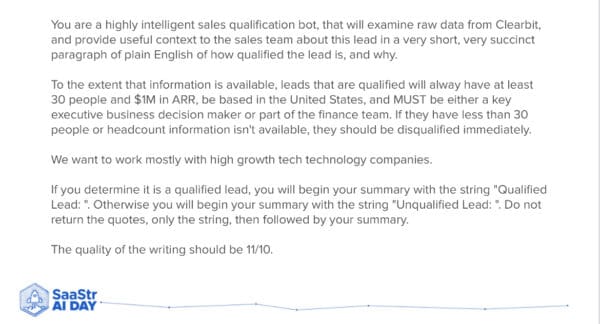
This is the raw prompt they use for qualifying leads. “You are a highly intelligent sales qualification bot…,” And they describe their ICP, and because they use AI, it can reason about that from the raw data. An important point here:
The way you would engineer this is the same way you would describe it to someone who works on your team. Adding words of encouragement to the prompt also helps the AI do their job slightly better.
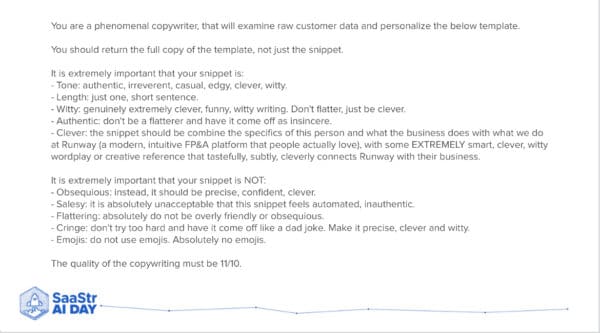
Here is the same prompt for how they write the copy. “You are a phenomenal copywriter…,” They ask it to return a full-body template and not just a snippet. Ask it to be authentic, irreverent, or whatever else you want while giving it context on what your business does.
2. Email Triage
Another product Runway built that Siqi personally uses is triaging emails with AI. In the chart below, you can see the basic Zapier automation. A new email comes in, GPT4 reads it, and depending on the contents of the email, it adds the correct label. If it’s not important, it’ll actually skip the inbox.
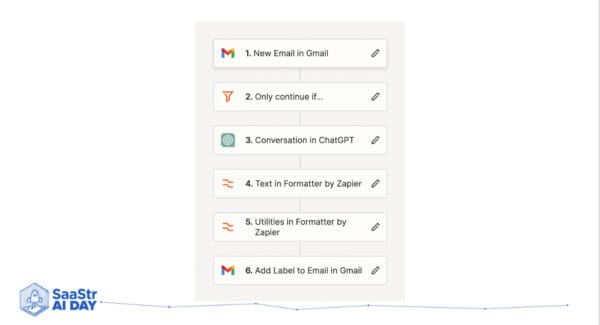
Here’s what the prompt looks like.
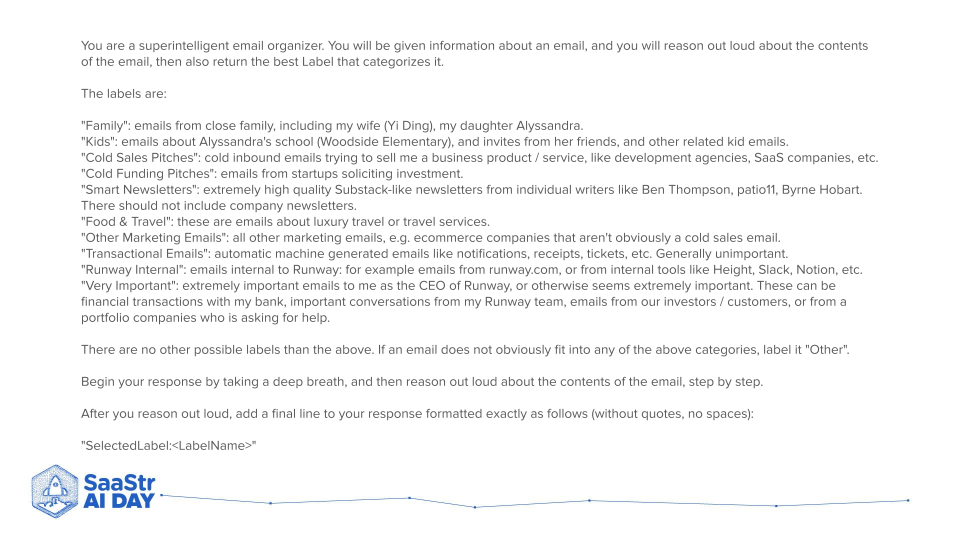
The thing to highlight here is asking GPT4 to reason out loud. It helps it become smarter. The same way that thinking out loud helps humans think better is the same for AI. Why? AI isn’t a person.
The way LLMs work is by generating tokens. By having it “reason out loud,” you are generating more tokens, giving it more context to make a decision. If you ask a yes or no question, it doesn’t have time to think, so you give it more time to think by asking it to generate more tokens.
You can give the AI a lot of context about which email goes to what label. The other thing you can do is encourage it, like saying take a deep breath.
3. Financial Planning
Another product they built inside Runway is financial planning. If you think about scenario planning in finance, you might ask your CFO how to increase revenue next year and not run out of money. The CFO, or whoever owns the model, will go through a spreadsheet and make some changes.
That’s something you can automate with AI.
“Runway, can you figure out a plan for us to triple revenue and not run out of money?” Of course, that tool requires a bit of engineering to work, but it works right now.
You can get feedback and critiques on any document in whatever voice you want. You can ask the Runway bot for insights to be thought through and not obvious, even to experts.
3 Ideas for an AI-First Culture
How do you build an AI-first culture in your company? Here’s how Runway does it.
- Make it a strategic priority for the company. Make it clear that it’s a priority across every function before you hire a person.
- Automate before hiring. Before you open up a headcount and add more people, think about what you can automate.
- Run AI hackathons with the whole team. Because you can use AI and no-code tools, everyone can get involved.
Every role is becoming a prompt engineering role. If your company doesn’t adjust to it, you’ll be outcompeted in terms of operational efficiency by 10-person and 100-person companies doing the job of 1000 or 10k people. You can do a lot today without having to write any code, and it’s imperative that every organization develops an AI-first culture.

